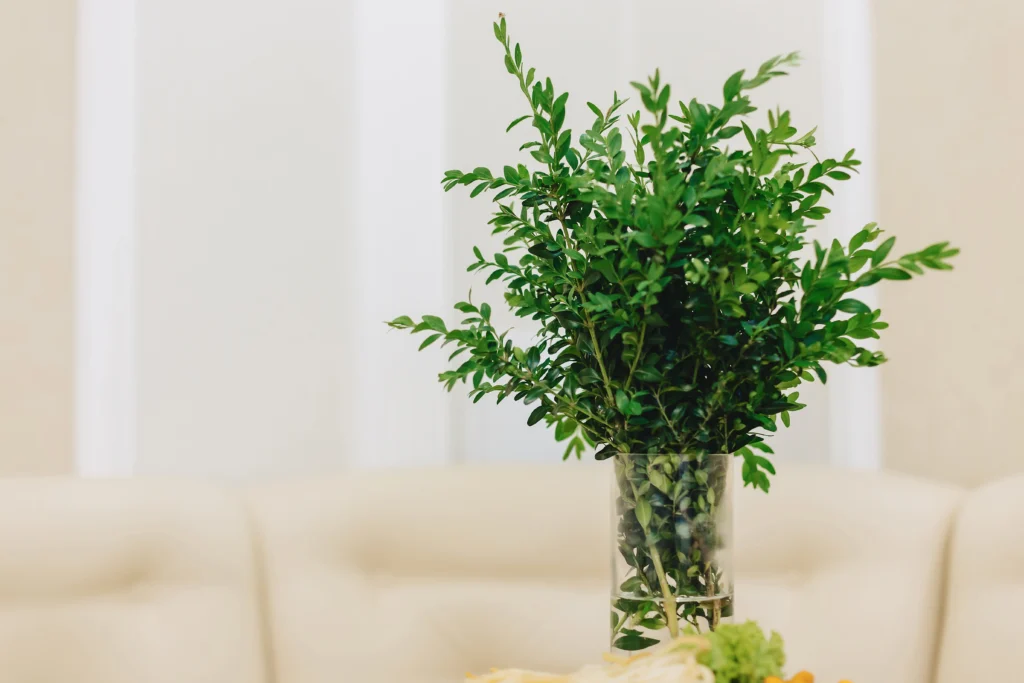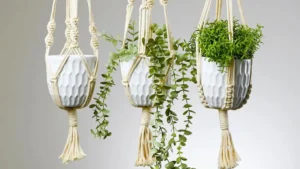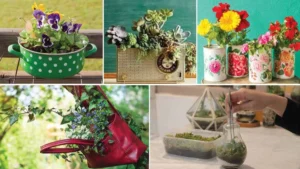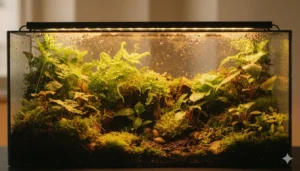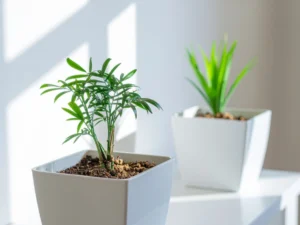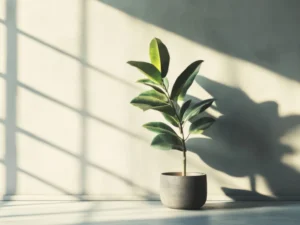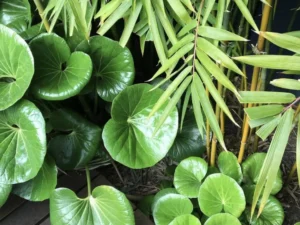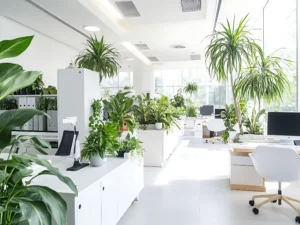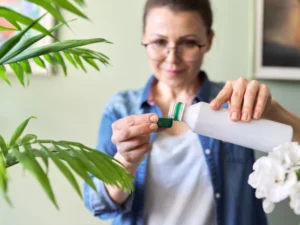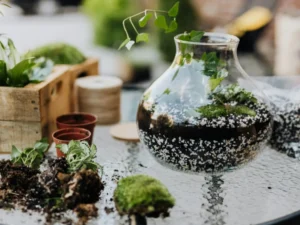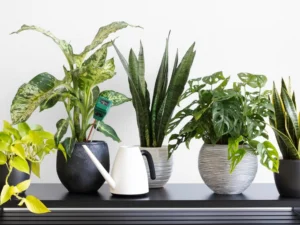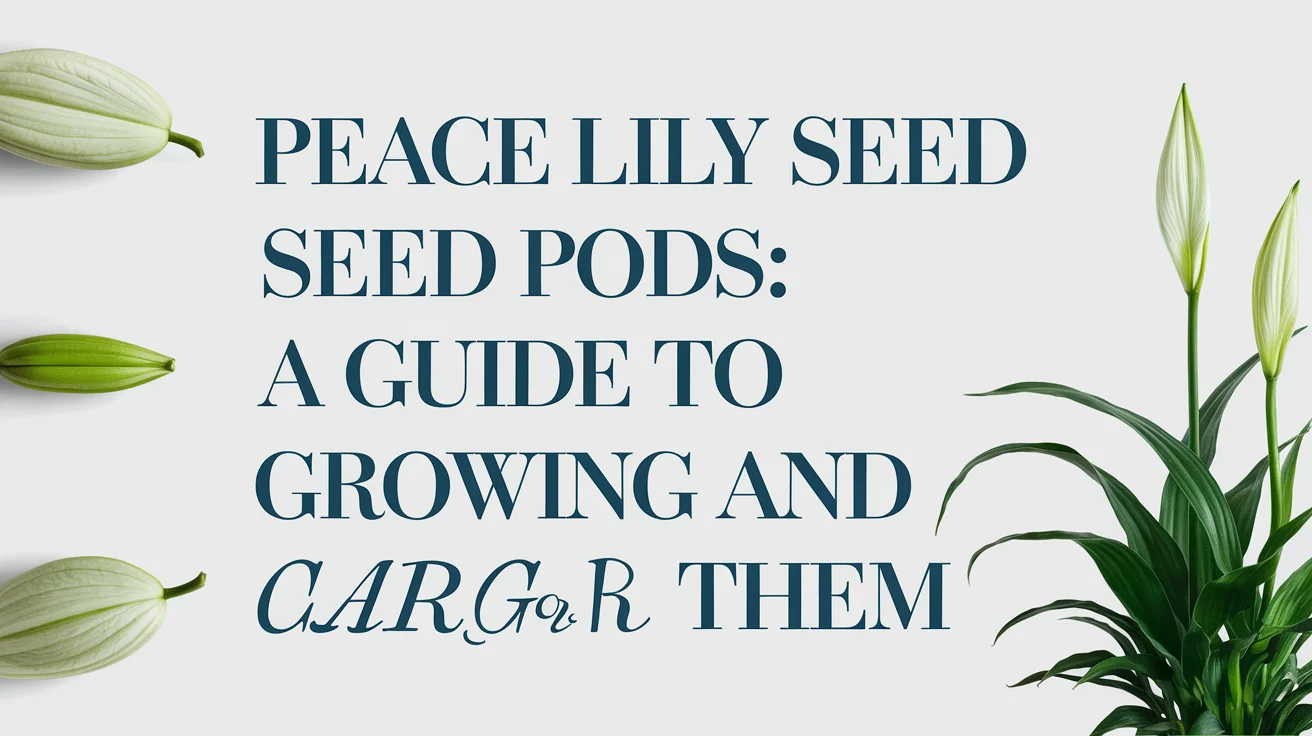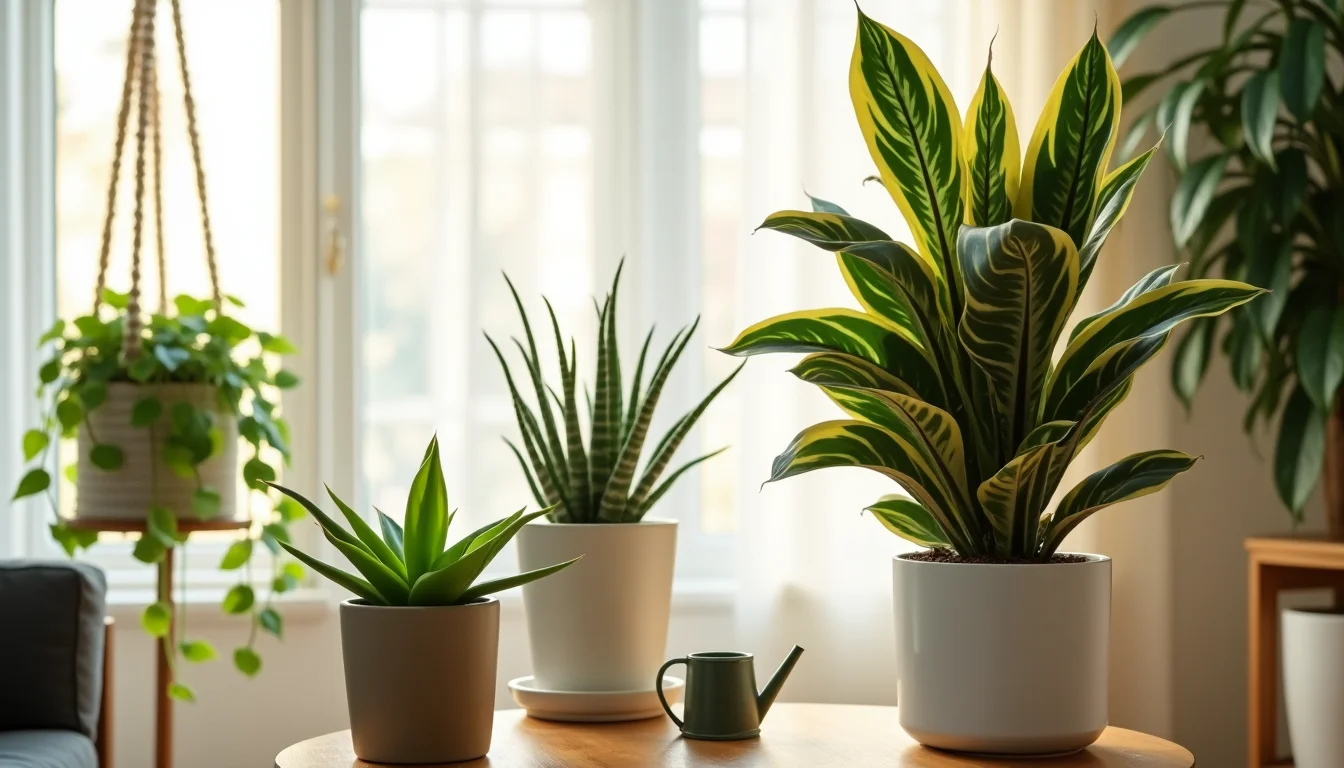Bonsai bamboo is more than a houseplant; it’s a living sculpture that brings Zen-like tranquility and natural elegance indoors. With its slender, graceful stalks and delicate foliage, it adds vertical interest to any room, making bonsai bamboo plant care both an art and a rewarding experience.
But beneath its calm exterior lies a plant that thrives only with thoughtful care: the right balance of light, water, humidity, and pruning makes all the difference between a thriving bonsai forest and one in decline.
This updated guide to bonsai bamboo plant care goes beyond basic tips. You’ll discover practical advice on watering routines, seasonal soil care, pruning methods, pest control, and creative ways to display your plant beautifully.
Whether you’re just starting out or already love growing bonsai, this guide gives you everything you need to help your bonsai bamboo thrive and look stunning in your space.
Bonsai Bamboo Plant Care with Right Light and Pot
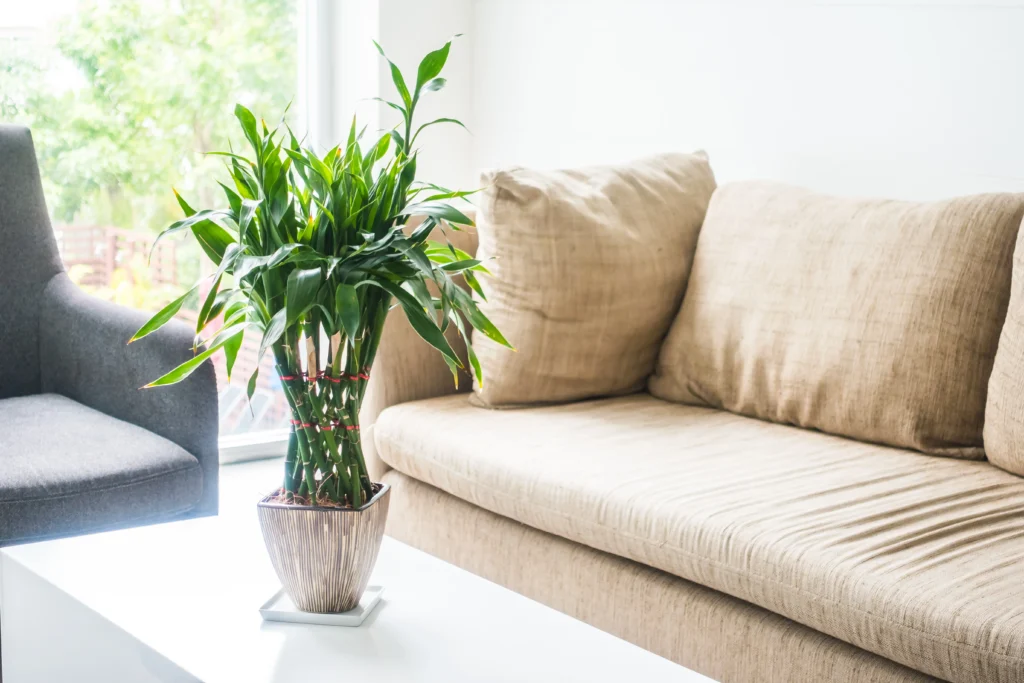
Before your bonsai bamboo can flourish, it needs the right foundation. This means choosing the ideal light conditions, soil mixture, and container to match its needs.
Many plant lovers overlook these basics and end up with yellowing leaves or stunted growth. Bamboo may be resilient, but in a bonsai form, it requires precision from day one.
Think of your setup as the plant’s environment for life. If you get it right from the beginning, you’ll see fast root development, healthy leaf growth, and better resilience to seasonal changes.
A poor setup, on the other hand, often leads to root rot, fungal issues, and a lack of vertical strength. Let’s break down the essential elements to create the perfect start.
Best Lighting for Bonsai Bamboo
Bonsai bamboo needs bright, indirect light. A spot near a sheer-curtained window or a space with morning sunlight works well. Avoid harsh afternoon sun, which can scorch the leaves. If indoors, consider rotating the plant weekly so all sides receive even exposure.
The Ideal Soil Mix
Use a loose, well-draining mix that retains some moisture but never stays soggy. A blend of bonsai soil, perlite, and peat moss offers the right aeration. The goal is to prevent compact roots and allow oxygen to flow freely through the root zone.
Choosing the Right Container
Go for shallow pots with ample drainage holes. Ceramic or terracotta containers not only look beautiful but also keep the soil cooler and help prevent root diseases. Make sure the container size is just big enough to support the root spread without crowding.
Bonsai Bamboo Plant Care for Water and Humidity
Getting the watering routine right is one of the most important aspects of bonsai bamboo plant care. While bamboo is often associated with water-loving behavior, overwatering is one of the biggest mistakes you can make.
Bonsai bamboo, due to its compact container and delicate roots, needs a very controlled moisture balance. Too much water can lead to root rot and fungal growth, while too little dries out the leaves and stunts the plant.
Humidity is equally crucial, especially if you’re growing the plant indoors. Homes with dry air can quickly sap moisture from both the soil and the leaves. Maintaining the right humidity around your bonsai bamboo not only keeps the foliage vibrant but also reduces the risk of brown leaf tips or crispy edges.
Whether you’re in a humid region or using indoor heating, adjusting the moisture levels is key to long-term success.
How Often to Water Bonsai Bamboo
Watering frequency depends on season and room conditions. In summer, you may need to water every two to three days. In winter, once a week may be enough. Always check the top inch of soil before watering. If it feels dry, it’s time to hydrate. Use room-temperature water and pour slowly until it drains from the bottom.
Bonsai Bamboo Plant Care: Signs You Are Overwatering
Overwatered bonsai bamboo shows yellow leaves, a musty smell, or soggy soil that stays wet for too long. If you see any of these, reduce watering immediately and let the soil dry out a bit. You might also need to repot the plant in fresh soil if the roots are turning black or mushy.
Maintaining Proper Humidity
If your indoor air is dry, place a shallow dish of water near the plant or use a pebble tray with water underneath the pot. Misting the leaves lightly every other day can help, but avoid soaking them. You can also group your bonsai bamboo with other plants to create a naturally humid microclimate.
Pruning and Shaping Techniques for a Balanced Bonsai
Once your bonsai bamboo plant is settled in the right pot with a healthy care routine, it’s time to shape it into something truly beautiful. Pruning and training are not just for aesthetics.
These practices also guide the plant’s energy and promote better airflow and even growth. Without proper trimming, bonsai bamboo can become leggy, uneven, or lose its compact bonsai charm.
The goal of pruning and training is to maintain a miniature, yet full and healthy bamboo look. With careful snips and gentle shaping over time, you can create layered foliage, neat stalk height, and even some artistic twists. You don’t need fancy tools, just a sharp pair of bonsai shears and a steady hand. Let’s explore how to master the art of bonsai shaping from home.
When and How to Prune Bamboo
The best time to prune is during the active growing season, typically spring to early summer. Trim off any yellowing or dying leaves first. Then, cut back any stems that are growing too tall or outside your desired shape.
Always trim just above a node to encourage bushier growth. Avoid cutting more than one third of the plant at a time to reduce stress.
Bonsai Bamboo Plant Care: Basic Shaping Tips for Beginners
If you’re shaping your bonsai bamboo for the first time, follow these simple steps to get started with confidence:
- Choose a basic design style: upright, slanted, or cascading
- Use flexible plant ties to gently direct new shoots
- Anchor ties to small bamboo stakes placed in the soil
- Adjust ties monthly to avoid cutting into stems
- Keep shaping sessions short to avoid overhandling
- Be patient and shape over several weeks for best results
Tools and Care During Shaping
Use sharp, clean bonsai scissors or shears to avoid damaging the plant. Sterilize your tools before each session to prevent spreading bacteria.
For small or delicate cuts, precision snippers work best. After pruning, avoid watering for a few hours to let any exposed cuts dry slightly and reduce infection risk.
Long-Term Bonsai Bamboo Maintenance for Lasting Beauty
Caring for a bonsai bamboo plant isn’t just about the early steps; it’s a lifelong commitment to consistent attention and small adjustments. Once the plant has developed its shape and is thriving in the right container, it enters a new phase of stability. During this stage, your goal is to maintain its health, appearance, and overall vitality without overwhelming it.
With just a few monthly habits, you can ensure your bamboo bonsai continues to impress for years to come. From seasonal tweaks to regular feeding and grooming, maintenance routines are light but essential. These little touches not only preserve the plant’s mini form but also deepen your bond with it as a living art piece in your home.
Bonsai Bamboo Plant Care: Fertilizing Through the Seasons
While bamboo doesn’t need heavy feeding, a light application of balanced liquid fertilizer once every 4–6 weeks during the growing season is ideal.
Spring and summer call for higher nitrogen to support new leaf growth, while fall benefits from a low-nitrogen formula to prepare for dormancy. Avoid fertilizing in winter, as the plant’s metabolism slows and excess nutrients can harm roots.
Rotating and Repositioning the Plant
Bonsai bamboo grows best with even light exposure, which is why rotating the pot every two weeks is helpful. This prevents uneven leaning or one-sided foliage. Repositioning also gives you the chance to refresh the look of your space.
If placed outdoors during warm months, transition the plant gradually to avoid shock from intense sunlight or sudden temperature changes.
Bonsai Bamboo Plant Care: Refreshing Soil and Repotting Over Time
Every 2–3 years, repotting becomes necessary to refresh the soil and give the roots more room. When repotting, trim the roots slightly to maintain the bonsai’s small size and prevent crowding. Use fresh, fast-draining bonsai soil and clean the pot thoroughly. Repotting is best done in early spring before active growth begins.
Conclusion
Taking care of a bonsai bamboo plant may seem like an art form, but it’s also a rewarding journey that anyone can master with the right guidance. From choosing the ideal plant to understanding how to prune and train it, every step builds a deeper connection with this miniature marvel.
When placed in the right spot, potted in breathable soil, and tended to with a calm, steady routine, bonsai bamboo becomes more than a plant; it transforms into a living sculpture. It brings elegance, energy, and a refreshing sense of calm to any space.
Whether you’re a beginner with your first indoor plant or a plant lover expanding your collection, bonsai bamboo plant care can fit seamlessly into your lifestyle. The key lies in small, consistent efforts, like adjusting light exposure, keeping an eye on growth, and responding quickly to early signs of stress.
With minimal tools, gentle shaping, and a bit of patience, you’ll create something truly unique. And as your plant grows, so will your skills, confidence, and appreciation for the beauty of mindful, minimalist living.

